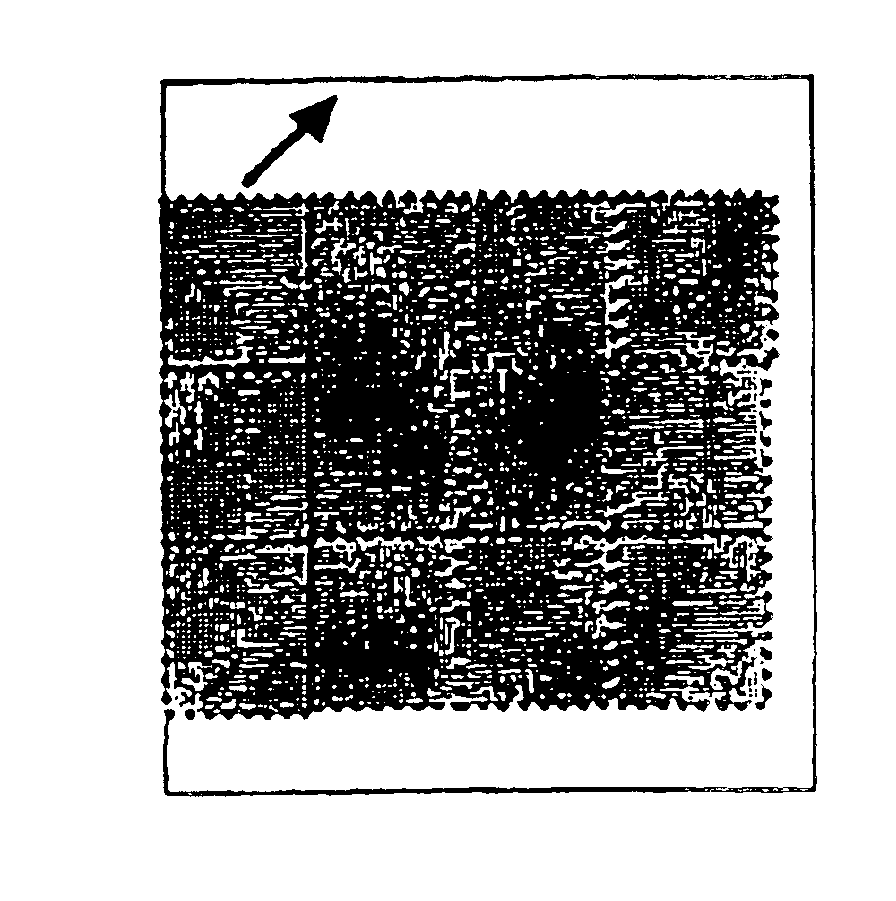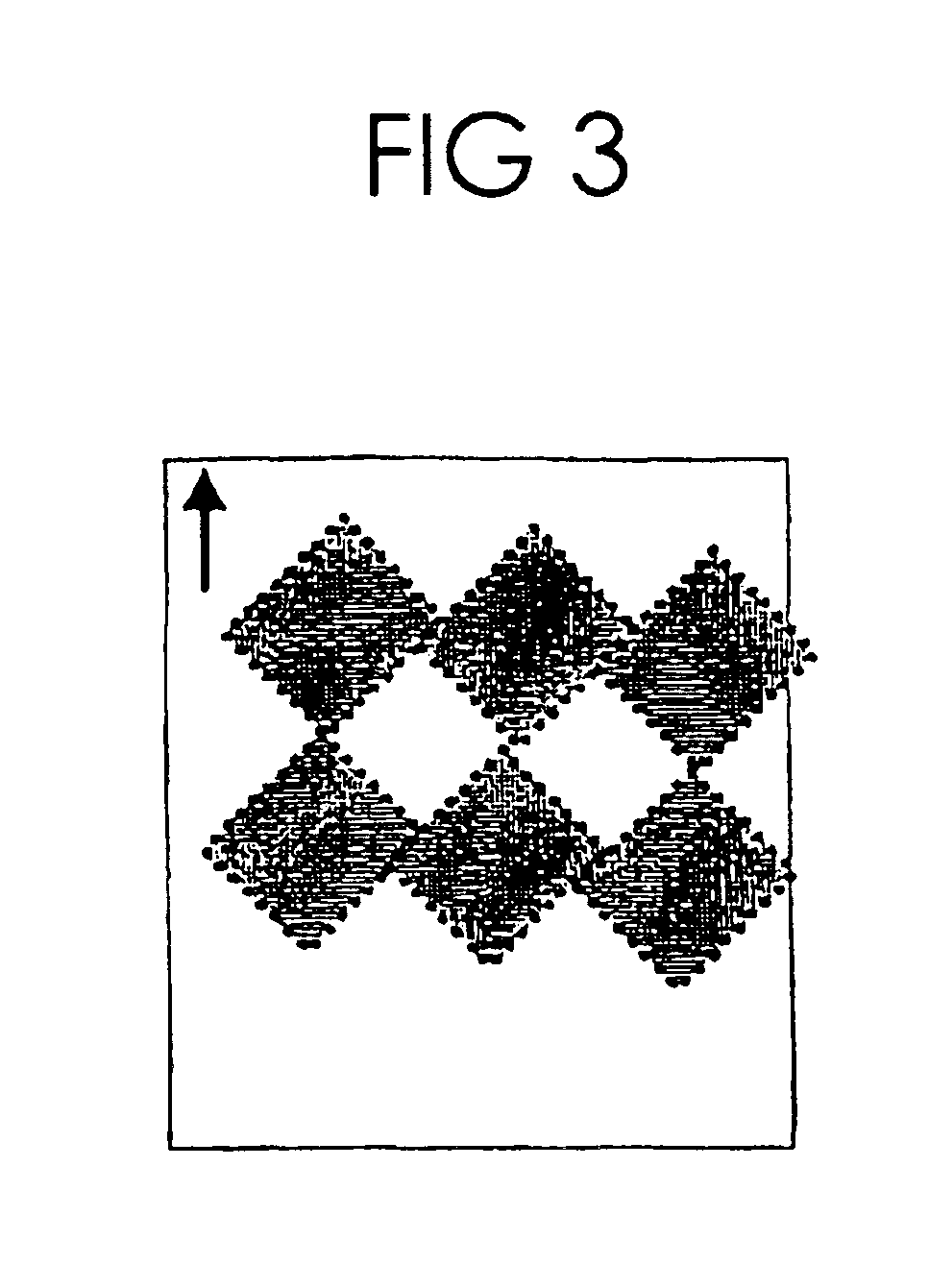Substantially colorless and optically anisotropic material
a colorless, anisotropic material technology, applied in the direction of colloidal chemistry, instruments, polarising elements, etc., can solve the problems of poor production yield, affecting the quality of the finished product, and the film of polyvinyl alcohol is liable to tear in the stretching direction, so as to achieve the effect of low viewing angle dependence and easy acquisition
- Summary
- Abstract
- Description
- Claims
- Application Information
AI Technical Summary
Benefits of technology
Problems solved by technology
Method used
Image
Examples
example 1
(Preparation of Colorless Micelle)
[0121]Cromolyn sodium (Wako Pure Chemical Industries, Ltd.) was weighed out in the amount of 6 g, and dissolved in 34 ml of water at room temperature. The solution was treated with an ultrasonic homogenizer (UH-50, SMT) for 10 minutes, and further stirred at 80° C. for 30 minutes to prepare a homogeneous dispersion of colorless micelle. Through this procedure, the micelle was easily formed.
(Preparation of Optical Film)
[0122]An appropriate amount of the substantially colorless micelle dispersion was weighed out and applied on a support film of saponified cellulose triacetate by means of a coating rod bar #3. During the coating procedure, the support was being transferred at 10 m / minute and the bar was not rotating. Thus, an optical film was prepared. Since the coating of the dispersion caused sufficient shear stress, optical anisotropy was obtained without any other procedure.
[0123]The optical concentration of the prepared optical film was measured w...
example 2
(Preparation of Colorless Micelle)
[0125]The compound (1) was weighed out in the amount of 6 g, and dissolved in 34 ml of water at room temperature. The solution was treated with an ultrasonic homogenizer (UH-50, SMT) for 10 minutes, and further stirred at 80° C. for 30 minutes to prepare a homogeneous dispersion of colorless micelle. Through this procedure, the micelle was easily formed.
(Preparation of Optical Film)
[0126]An appropriate amount of the substantially colorless micelle dispersion was weighed out and applied on a support film of saponified cellulose triacetate by means of a coating rod bar #3. During the coating procedure, the support was being transferred at 10 m / minute and the bar was not rotating. Thus, an optical film was prepared. Since the coating of the dispersion caused sufficient shear stress, optical anisotropy was obtained without any other procedure.
[0127]The optical concentration of the prepared optical film was measured with a densitometer (X-rite), to find ...
example 3
[0129]The procedure of Example 2 was repeated except that the compound (2) was used, to prepare an optical film.
[0130]The optical concentration of the prepared optical film was measured with a densitometer (X-rite), to find 0.05 in the visible wavelength region.
[0131]The prepared optical film was evaluated in the same manner as in Example 2. The result is set forth in Table 1.
PUM
| Property | Measurement | Unit |
|---|---|---|
| angle | aaaaa | aaaaa |
| length | aaaaa | aaaaa |
| light-transmittance | aaaaa | aaaaa |
Abstract
Description
Claims
Application Information
 Login to View More
Login to View More - R&D
- Intellectual Property
- Life Sciences
- Materials
- Tech Scout
- Unparalleled Data Quality
- Higher Quality Content
- 60% Fewer Hallucinations
Browse by: Latest US Patents, China's latest patents, Technical Efficacy Thesaurus, Application Domain, Technology Topic, Popular Technical Reports.
© 2025 PatSnap. All rights reserved.Legal|Privacy policy|Modern Slavery Act Transparency Statement|Sitemap|About US| Contact US: help@patsnap.com



